In addition to saving money, there are a lot of good reasons to find free camping sites (aka wild camping or dispersed camping) on your trip instead of staying at a campground…
- Avoid annoying camping neighbors who blast music or watch videos all day
- No electricity or WiFi means you get to truly connect with nature
- Don’t have to make any reservations
- Can be completely alone in the wilderness, if you want.
- Amazing views, like the one below.
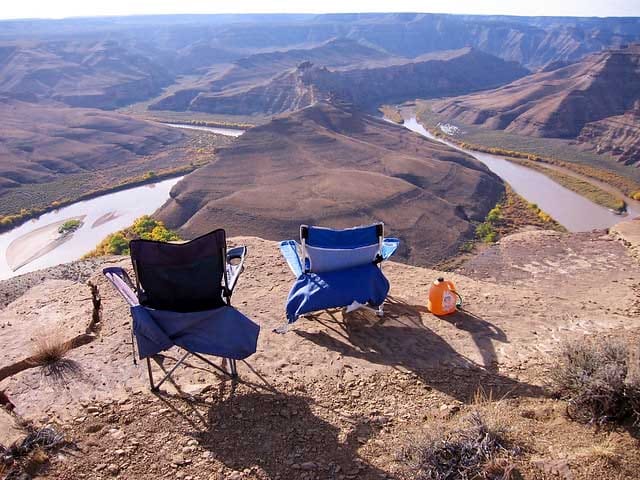
Free camping on BML land with a view of Desolation Canyon in Utah
Ready to find free camping sites? This guide will tell you how and give you links to resources like interactive maps, permit info, and more. Happy camping (and Leave No Trace!)
Jump to:
- Free Camping in National Parks
- State Parks
- National Forests
- BLM Land (Dispersed Camping)
- Private Property
- Around Your Neighborhood
- Resources for Finding Free Camping Sites
Want to Camp for Free? Be Prepared to Get Off the Beaten Path
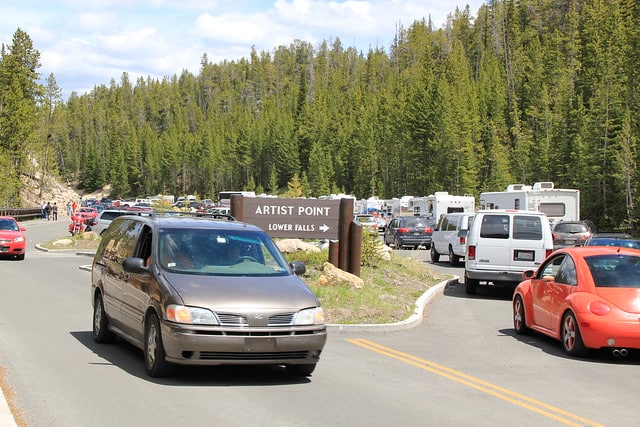
Over the past decade, outdoor activities have become much more popular. Just visits to national parks has increased by 55 million visitors since 2007. That adds up to over 330 million visitors per year!
While it’s awesome that more people are getting outdoors, this is resulting in nature getting “loved to death.”
Park fees and paid campgrounds exit as a way to minimize impact on the land. As much as I personally believe that nature should be open and accessible to all, those fees are a necessary evil. Imagine how many people would trample over Yosemite or the Grand Canyon if no permits were required?
If you want to camp in popular locations, be prepared to pay.
However, if you are willing to get off the beaten path (literally and figuratively), you can find all sorts of free camping spots.
The Case for Campgrounds
I personally prefer wild camping for free over campgrounds because it gives me a chance to completely unplug and connect with nature. However, there’s some good to be said of paying for campgrounds.
If you are new to camping, it’s really helpful to have running water, a bathroom and trash cans instead of figuring out how to filter water, dig a cathole or pack out your trash (You MUST follow the rules of Leave No Trace when free camping!).
As a parent, I also like that there are usually other families at campgrounds. My daughter gets to play with their kids, and I get to finally socialize with people who get it. By contrast, we rarely meet anyone –especially anyone with kids – when free camping. (If you don’t have kids though, one of the perks of free camping is that there aren’t any annoying kids around, haha!)
Free Camping in National Parks
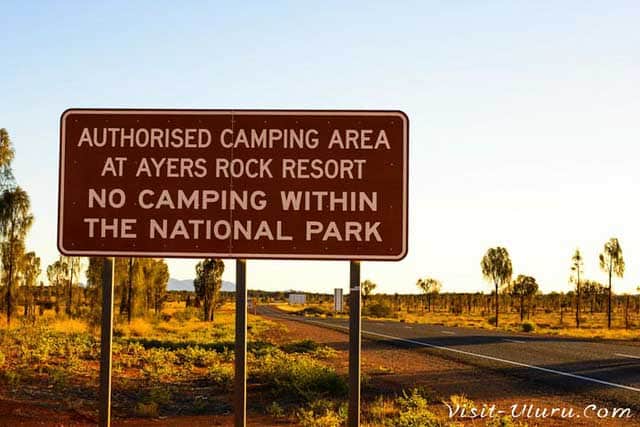
There are 61 national parks located in 29 states. Almost all of these national parks require you to get a permit in order to go wilderness camping. And that permit almost always comes with a cost. 🙁
Backcountry Camping Permit Costs
Each of the 61 national parks in the USA has its own fee system. To visit the park and stay overnight, you will probably need to pay:
- A vehicle entrance fee (usually $15 to $35) or a per-person fee (usually $3 to $15)
- About $4 to $10 per night for the camping fee
- Another small fee for the permit itself
Here are some examples:
Great Smoky Mountains National Park:
A permit for the Smoky Mountain National Park costs $4 per person, per night, with a maximum charge of $20. The permit is only good for 7 days though, so you are limited to how long you can stay.
There is no fee to enter the Smoky Mountain though. So, you could go camping for 7 days for just $20. By contrast, most campgrounds in the Smoky Mountains cost around $17-$25 per day.
Olympic National Park in Washington
Olympic National Park in Washington costs $8 per person, per night plus a $6 permit fee. Camping for 4 nights would cost $38. Camping for 10 nights would cost you $86. On top of this, you have to pay entrance into the park. If arriving by vehicle, it’s a $30 fee. If arriving by foot, it’s a $10 entrance fee.
Free National Parks
There are a handful of National Parks which give free permits, which means you get to camp for free.
For example, Shenandoah National Park in Virginia doesn’t require a permit at all.
Yosemite requires a permit, but it is free (aside from the $5 reservation fee). However, permits for Yosemite are notoriously difficult to get since the park is so popular.
You’ll have to search the NPS website to see the permit costs and requirements for the National Park you want to go to.
Note:
- Even with a permit, you may not be allowed to camp wherever you want. You often have to camp at designated campsites or stay in shelters.
- Permits are often limited in number. Here’s a good guide to getting hard-to-get permits for national parks.
America the Beautiful Annual Parks Pass
If you visit national parks frequently in one year, it’s worth it to get the Annual Parks Pass. The pass covers entrance fees to National Parks, day-use fees, and also gives some discounts on campgrounds.
The pass covers the owner plus up to 3 adults in the same vehicle (children up to 15 years old get into national parks for free). As Ontheluce calculates, entrance fees would add up to $185 for Arches, Bryce Canyon, Canyonlands, Zion, Mesa Verde, and the Grand Canyon.
The pass costs:
- $80 for adults
- $20 for seniors (62 year old and up)
- $80 seniors lifetime pass
- Free US military pass
- Free for residents with permanent disabilities
The pass does NOT cover any backpacking fees or permit costs though. You still need to apply and pay for these, even with the Annual Pass. Read more about the prices and what the pass covers here.
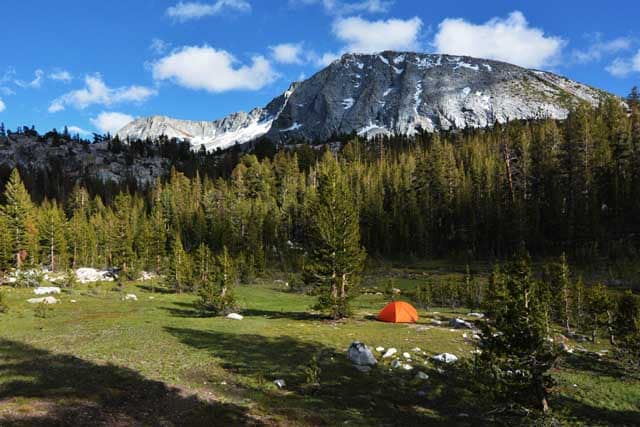
Beautiful camping spot in Yosemite with a view of Vogelsang Peak. A permit is definitely required!
Can’t You Just (Illegally) Camp without a Permit?
I won’t advise you to do illegal things. However, I do know a few people who have backcountry camped in National Parks without a permit and didn’t get into any trouble.
They were in less-popular National Parks where they hardly saw anyone during the entire trip. In more popular NPs, you can bet that there will be rangers at the trail heads checking permits. The Yosemite rangers even carry side arms.
(Whether you should camp without a permit is a whole different issue. There’s a lot of debate about whether nature should be kept free and open to anyone, or whether we should limit access to keep nature pristine…)
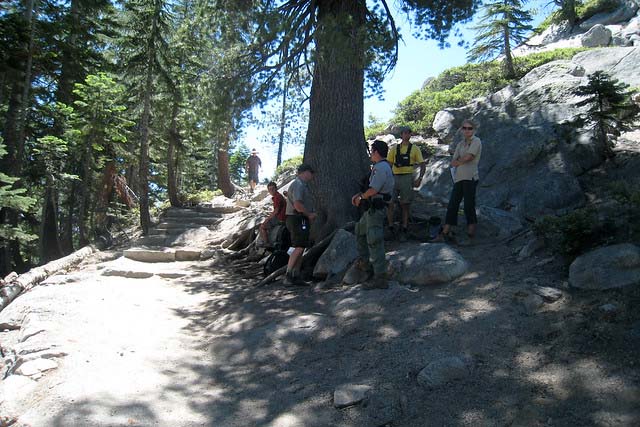
Park Rangers checking permits for Half Dome at the base of the trail
If you do try to free camp in a National Park without a permit though, you are risking big fines. The NPS website says that failure to follow park regulations “may result in a fine of up to $5,000 per violation and/or 6 months in jail.”
I doubt you’d actually get that high of a fine (unless you were doing something really terrible, like littering or making an unsafe campfire). But a lot of it depends on the mood of the ranger. You might just get a warning or escorted out of the park. Or you might end up in jail.
The Bottom Line?
I wouldn’t risk trying to free camp without a permit in National Parks, especially popular ones. If you can’t get a permit, consider camping in a National Forest instead. National Forests usually border National Parks.
State Parks and Forests
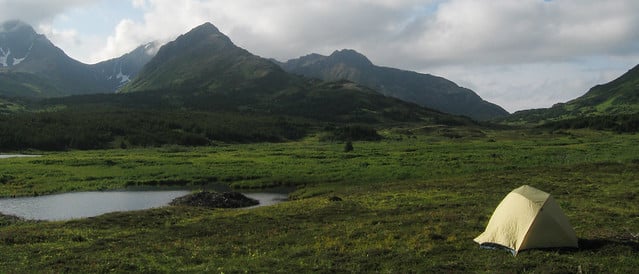
Amazing free campsite in Chugach State Park, Alaska
Compared to National Parks, State Parks tend to be much more relaxed in their rules. You can often camp for free in the backcountry. You may not even need a permit in some State Parks.
For example, the Catskills State Park in NY allows camping anywhere below 3,500 feet (so long as you are 150 feet from a road, trail, or water body) and camping above 3,500 feet at designated sites. You only need a permit if camping for more than 3 nights or at specific protected areas. The permit is free.
By contrast, Michigan State Parks have stricter rules. They only allow camping at designated campgrounds.
Good Practice:
Even if a camping permit is not required, it’s still good practice to call the local rangers and let them know you are coming, where you plan to be, and entrance/exit dates. If anything happens to you, they will know where to look for you!
Likewise, it’s good practice to put a note on your car (or make sure you gave the rangers your license plate number when you call). That way the rangers won’t get concerned when they see a car sitting there for days on end.
National Forests
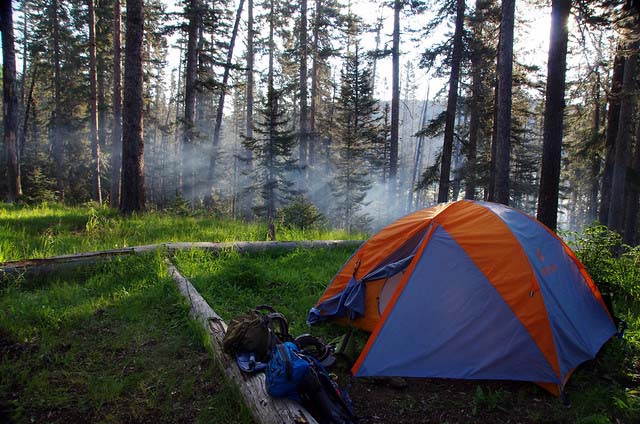
Free campsite in Santa Fe National Forest
In addition to the 61 National Parks in the USA, there are many other beautiful, protected nature areas. The DIO runs national parks. As they explain, NPs can only be created by congress and are managed by the National Parks Service.
By contrast, the country’s 154 national forests are run by the US Forest Service (a part of the Department of Agriculture).
National Forests are “multi use”, which means that they can be used for recreation as well as activities like logging, mining, and grazing.
The great thing about national forests is that free camping is almost always allowed. In addition, national forests tend to be a lot less crowded than NPs. Since they are often located right along NP boundaries, you can camp at some stunning places without the fees or crowds.
Permit Requirements
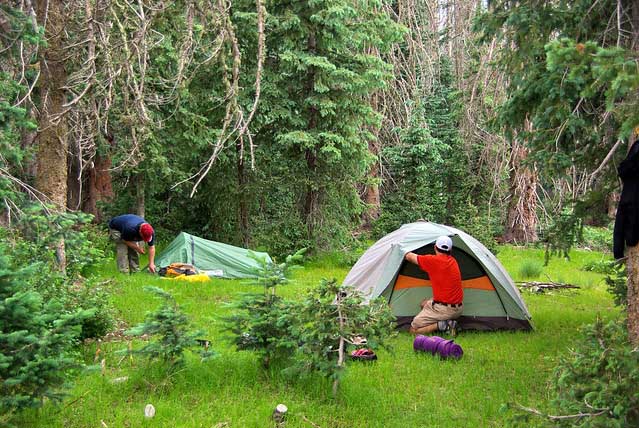
Setting up camp at Kendrick Peak in Coconino National Forest – Free and no permit required!
Like with NPs, you’ll have to check the requirements of the forest you plan on going to. Each national forest has its own rules. The permits are usually free though. You may need separate permits for camping, campfires, fishing, etc.
For example, Cleveland National Forest (which is part of the PCT) allows for completely free backcountry camping unless you are parked in an area that requires a parking fee. A permit is required but is fairly easy to get.
There are rules to follow, but they are all rules you should be following when wild camping anyway: must bring a trowel for burying human waste, camp must be 100 feet from a water source, do not block roadways or trails…
Quotas
Some national forests are so popular that they have put quotas on permits. For example, the Inyo National Forest has quotas on almost all trails. Only 8 people per day can enter at Baker Lakes, for example.
This just goes to show that you may need to plan your backpacking trip well in advance. Some of these permits are very hard to get – and you can bet the rangers will be checking for permits at the trailheads. You can check for info at https://www.fs.usda.gov
National Recreation Pass
In addition to NPs, the National Recreation Pass also covers national forests. This will cover some fees, like entrance fees. You still need to get permits, if required, though.
BLM Land (Dispersed Camping)
BLM stands for the Bureau of Land Management. They oversee over 245 acres of public lands. Most of this land is in the Western States, including: Alaska, Arizona, California, Colorado, Idaho, Montana, New Mexico, Nevada, Oregon, Utah, Washington, and Wyoming. There’s also handful of BLM land in the Eastern States too.
For the most part, camping on BLM land is completely free and no permit is required.
Of course, there are some exceptions to this. For example, you might find a “closed to camping” sign in conservation areas. There are also some restrictions on where you can free camp and for how long:
- Must be away 200 yards away from a developed recreation area such as a picnic area, trailhead, or campground.
- Also must be 200 yards away from a water source, such as a stream or lake.
- Cannot camp for more than 14 days within a consecutive 28 day period. After the 14th day, the camper must move 25 miles away from the campsite.
- Cannot leave personal property unattended for more than 10 days (12 months in Alaska).
- Do not drive your car off-road (such as through grasslands or fields) to get to a campsite. If an existing site isn’t car accessible, park your car along the road and walk your gear to the campsite.
Basically, you can’t set up a permanent camp on BLM land. Stay away from high-use areas and you will be fine. And (of course) be respectful of nature!
How to Find Free Camping on BLM Land
When driving through the Western States, I did quite a bit of dispersed camping. You’ll often find small roads off the main road. Just follow them and set up camp off the road. Sometimes you’ll even find flat area and fire rings where other people have camped before.
If you want to stay at a campsite for longer than one night, then you can scout one out in advance. The BLM has a really great interactive map. All of the yellow areas on the map are BLM land.
See the interactive BLM map here.
See a PDF version of the map here.
There’s also a great website called Public Lands. They not only show you public lands, but also let you choose features and facilities. To use it:
- Go to http://publiclands.org
- On the lefthand side, select “Go to State”
- Once the state map is brought up, find the facilities menu and select “primitive campground”
- Under the public lands menu, select “BLM”
You don’t have to limit yourself to the primitive campground sites listed on the map. Other BLM land could be a great camping spot. Just remember to check beforehand to see if you need a permit or if there are any special restrictions.
If you want to find a developed (i.e. paid camping) site on BLM, go to https://www.blm.gov/programs/recreation/camping and click on the state you want to visit.
Free Camping on Private Property
I now live in Eastern Europe and it’s incredibly easy to find free camping here. When in small villages, I’ll just ask the homeowner if I can camp in their yard. Of course, I clarify that I’ll be camping well away from their home and won’t be leaving any mess.
I’ve never had anyone say no to me (probably helps that I camp with my daughter). The only issue I’ve had is that the locals often don’t understand why I’d want to camp and invite me to stay the night at their homes, haha!
While I’ve never tried this in the USA, I’m sure that the Americans would be just as hospitable. Plenty of cyclists going on long trips have had great experiences with free camping on private property. Bear in mind that this is usually only for overnight camping and not longer, recreational trips.
There’s also always the option of camping illegally on private property. You can check local real estate websites for undeveloped land for sale or use Google Satellite maps to see where large, uninhabited properties are located. But, yes, this always comes with the risk of getting caught.
For useful information on how to camp anywhere (and not get busted), check out this guide by Tom’s Bike Trip.
Below are some places where you can find free camping on private property.
Boondockers Welcome
I was happy to discover that there is a website for free camping on someone’s property. It’s called Boondockers Welcome. Basically, it’s like Couchsurfing but for RVs and campers. Locals who have a nice yard list themselves as hosts. Then you can request to stay on their property.
While I haven’t tried this website, I’m certain that socializing is expected. People sign up as hosts in order to meet new people. So, this is not a good option if you want seclusion or a wilderness experience.
It costs $25 to sign up with a guest membership. Check it out here: https://www.boondockerswelcome.com/
Logging Roads
Land used by logging companies is technically private property. They usually are fine with people camping on their land so long as you don’t interfere with their work. Of course, you should check with them first and stay away from any areas that they will be working in.
Parking Lot Camping
A lot of RV travelers will camp in Walmart parking lots. There is even an online directory of Walmarts which allow RV camping. Apparently you can often camp in casino parking lots too. There’s a directory for that too here.
And of course truck stops are an option, if not the nicest option. You can find a resource with the best trucks stops in the USA here.
Camping in Your Neighborhood
Some of the best camping experiences I’ve had were in small woods and streams near my home. They might not have spectacular vistas, but I was still able to get outdoors and enjoy nature.
Best of all, it doesn’t require much planning to camp around your neighborhood. Bad weather? No big deal – just call off the trip.
I bring this up to remind you to think outside the box. The true adventurers are the ones who manage to find excitement in their own backyards.
Resources for Finding Free Camping
Here are some great websites which allow you to search for campsites, including free campsites on public lands.
- Campendium.com (US & Canada): You can search for free camping by state. There’s a mobile app too.
- Publiclands.org: As mentioned in the BLM camping section, this website has a great interactive map which allows you to search for free and paid camping sites on BLM and National Forest land.
- freecampsites.net: This website has a great interactive map. It allows you to filter an area by free, paid, and permit-required camping. There are also filters for things like access road (dirt, gravel, asphalt, 4×4) and amenities.
- rvparky.com: This is an awesome resource for people traveling by RV. They have an interactive map which lets you filter by public parks, RV parks, casinos with free overnight parking, and much more.
- allstays.com: There is an interactive map of campsites in USA states. The filters let you look for campsites on public lands, national parks, and state forests. There’s also an app.
Do you have any tips to add about free camping? Let us know in the comments section below!
Not sure what to eat while wild camping? Check out my eBook!
It’s got over 50 calorie-dense, lightweight meals for the trail, plus tons of info on backpacking meal planning. Check out the book here.

Image credits:
“My Public Lands Magazine, Summer 2014” (CC BY 2.0) by mypubliclands
“Artist Point parking lot” (CC BY 2.0) by daveynin
“Camping in the High Sierras. Yosemite Na” (CC BY 2.0) by Paxson Woelber
“Authorised camping area at Ayers Rock Re” (CC BY-NC-ND 2.0) by UltimateNomads
“Proctor Road Sign (Madera Canyon)” (CC BY-NC 2.0) by stinkenroboter
“Rangers” (CC BY 2.0) by Doug Letterman
“Our Campsite & Morning Sunlight” (CC BY-NC-ND 2.0) by sarowen
“Camping below Kendrick Peak” (CC BY-NC 2.0) by Al_HikesAZ
“Camping out in Chugach State Park, Alask” (CC BY 2.0) by Paxson Woelber
“#mypubliclandsroadtrip 2016: Our Camping” (CC BY 2.0) by mypubliclands
Resources for this article:
https://www.nps.gov/orgs/1207/02-28-2018-visitation-certified.htm
https://www.reddit.com/r/backpacking/comments/2pjbvv/what_happens_if_i_dont_get_a_backcountry_camping/
https://backpackinglight.com/forums/topic/67373/
https://backpackinglight.com/forums/topic/67373/
https://www.dec.ny.gov/outdoor/108207.html
static/file/IC3003-1_Park_Rules_Poster.pdf
static/file/fseprd529218.pdf
static/file/stelprdb5143453.pdf
https://www.backpacking.net/forum/ubbthreads.php?ubb=showflat&Number=168909
https://www.reddit.com/r/norcalhiking/comments/6e4u9p/nonpermit_backpacking_areas/


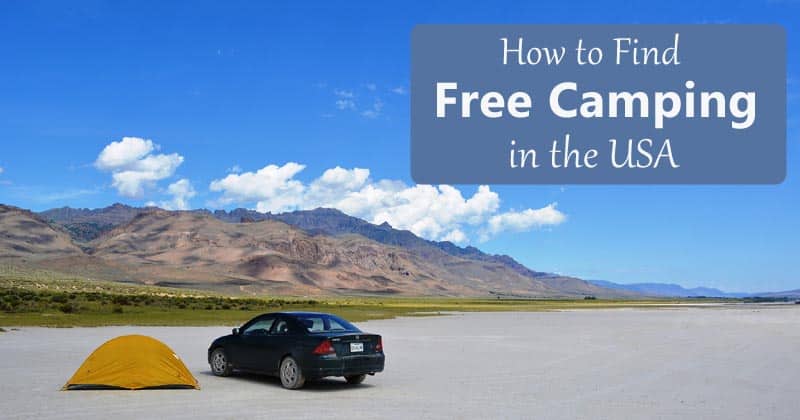
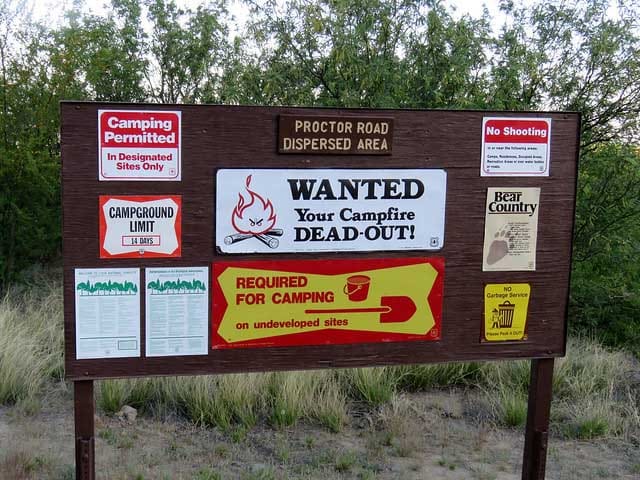
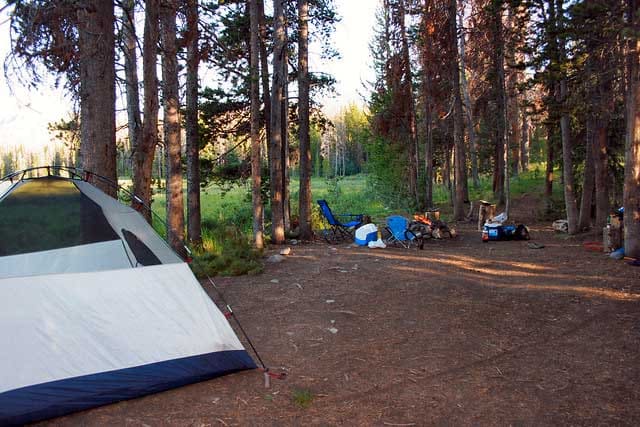
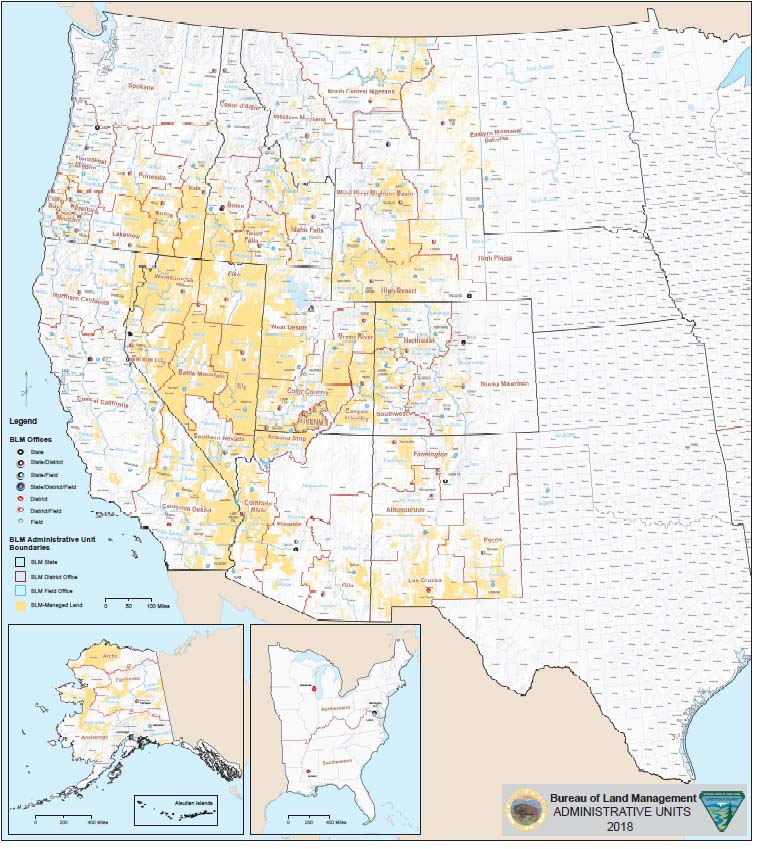
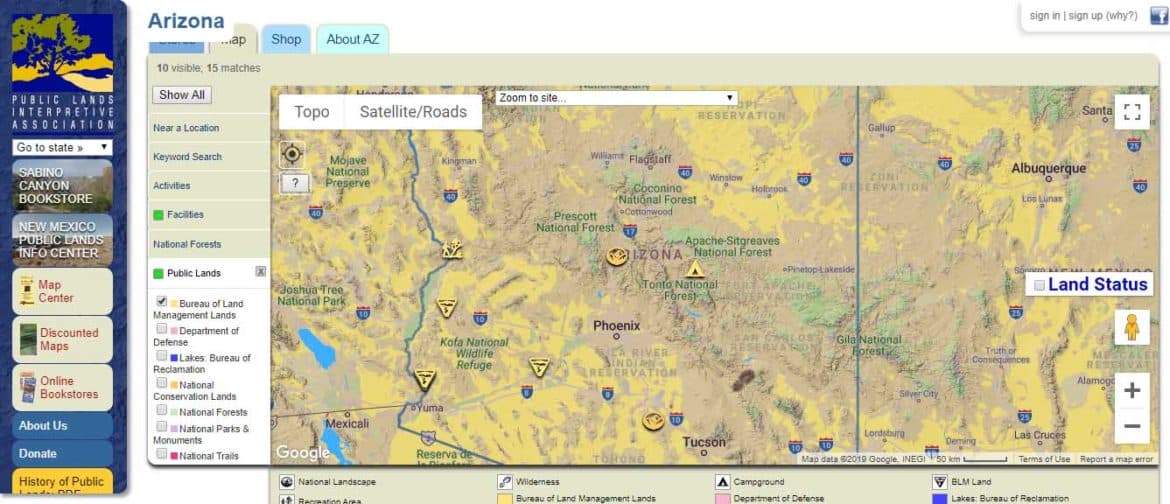
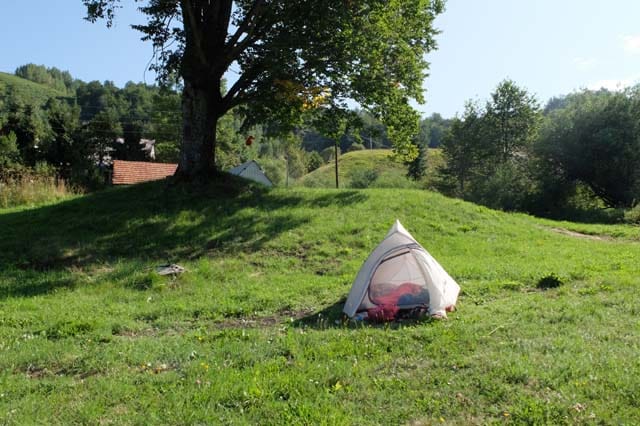
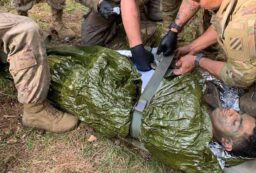
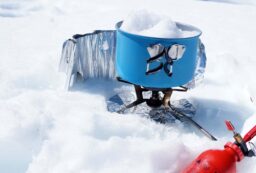
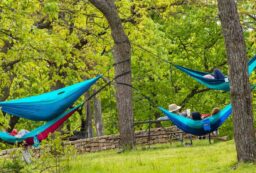






Post your comments